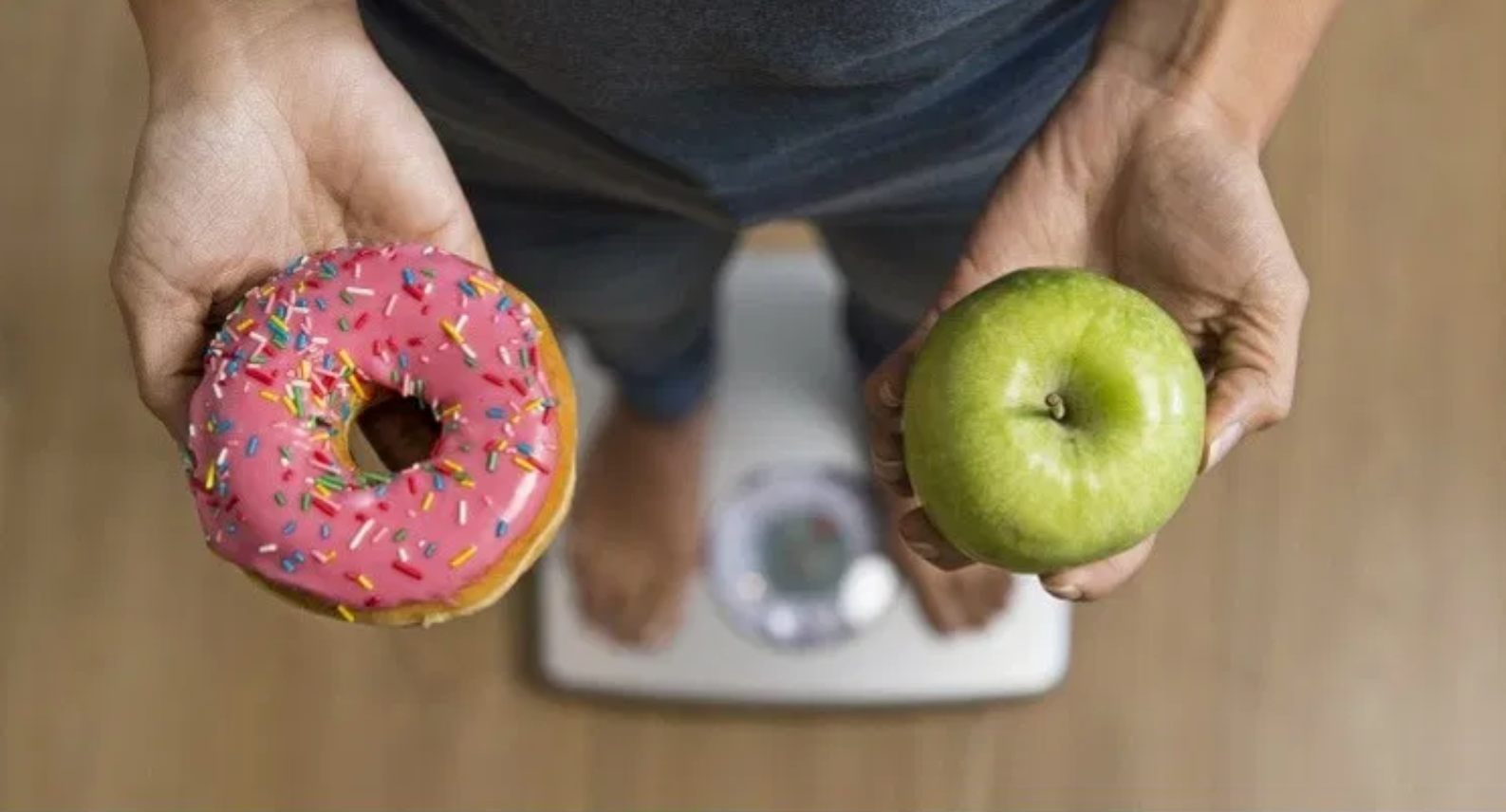What Is Intermittent Fasting?
In its most basic form, IF is essentially the practice of occasionally (or at certain times) going for periods of time without food.
That’s right, you don’t eat anything.
This typically raises two key questions:
1. Don't I do this when I'm sleeping?
2. Surely you will lose weight by not eating?
The answer is yes to both of these questions, but we must look at the facts in more detail to better explain this modern protocol.
Everybody fasts, whether it’s from an overnight fast (when sleeping), during periods of food scarcity or perhaps even for religious reasons.
Intermittent fasting is not a ‘diet’, but rather a dieting pattern. Essentially, it is making a conscious decision to skip certain meals. You are therefore deciding on a specific time period to consume your daily calories, while forgoing food at other times of the day.
Over the last few years this has become increasingly popular with the health and fitness conscious as a further means to manipulate their eating habits for increased results.
How Does Intermittent Fasting Work?
IF appears to be a rather simple protocol on the whole, however there are a variety of other protocols that follow this general ideology, but are very different in practice.
There are a number of popular IF protocols that are worth knowing about and understanding.
Unlike some of the modern nutrition protocols, the lack of scientific basis behind IF has left itself open to manipulation by many users and proponents.
The current research on fasting is still relatively new and it wasn’t until its increased popularity that we have been able to get a true reflection of the benefits and negatives it has on a large population.
Existing ‘lab’ research is minimal on humans and many studies are of poor quality. Furthermore, it appears that many of the benefits of IF were noted when compared to ‘normal’ diets i.e. Western type diets. Therefore results from a scientific standpoint appear positive but could be disputed regarding accuracy and scale.
Many of the various IF protocols have therefore been based on other scientific studies along with strong support from anecdotal evidence. It appears that many people have had great success with various IF protocols and it really does seem like a case of ‘test it yourself and see if it fits’.
Want to learn the proven nutrition coaching strategies of elite trainers? Get access the exact nutrition coaching methodologies with this workshop!
Common IF Protocols And The Variations Between Them
Lean Gains (16 hour fast with 8 hour eating window)
This is a form of IF made popular by Martin Berkham. It is focused around a short daily eating window of 8 hours, followed by a 16 hour fast. The general recommendations are to start the eating around 12pm (around midday) and finish around 8pm(just before bed).
This means the bulk of the fast is completed overnight with the remaining hours coming first thing in the morning.
This protocol also promotes a diet from making good food choices and a focus on nutrient timing.
Weight training should be conducted during the fasting period but with the consumption of 10g Branch Chained Amino Acids (BCAA’s) prior to it. The bulk of the daily calories should be planned post workout for improved nutrient partitioning.
Eat Stop Eat (24 hour fast, 1 or 2 times per week)
This IF protocol takes the previous Lean Gains daily fast and extends it to a 24 hour fast, but only 1-2 times per week. Outside of this normal foods can be consumed, ideally coming from healthy whole foods.
Aside from this, you can pick the start of your fast, so it can be morning to morning, or dinner to dinner, the choice is yours.
Alternative Day Fasting (ADF) (36 hour fast, 12 hour eating window)
This is considered one of the most aggressive forms of IF, as food is consumed only every other day. You have a 12 hour eating window by: 8am-8pm followed by a 36 hour fast from all foods.
There is less focus on the food choices and calories intake during the eating window than with the other IF protocols.
Warrior Diet (20 hour fast, 4 hour eating window)
This is somewhat similar to the Lean Gains protocol and extends the fasting window up to 20 hours each day. It is typically recommended that the eating window is conducted in the evening to reap the benefits of fasting throughout the day.
It is possible to eat a small amount of selected foods during the fast (or also known as the under eating phase) that may enhance the effects of the fast and better prime the body for a large influx of food during the short eating window (overeating phase).
It is recommended that weight training occurs just before breaking the fast. This is repeated daily.
The Benefits of Intermittent Fasting
When we look at the list of benefits from scientific and anecdotal evidence, it is clear to see it has a lot to offer.
Studies have shown reduced blood lipids, blood pressure, markers of inflammation, oxidative stress and risk of cancer.
They have also shown increased cellular turnover and repair (autophagy), fat burning, growth hormone release, and metabolic rate later in the fast.
Also we have seen improved appetite control, blood sugar control, cardiovascular function, and effectiveness of chemotherapy.
Also, we are now seeing a large number of benefits in those who have experimented with the various IF protocols and these are notably:
Improved fat burning (particularly stubborn fat)
Many people are reporting improved fat burning, especially from stubborn body parts. Despite total energy intake being the key factor to weight loss, many are seeing an increase in fat loss despite similar calorie intake and no further cardio.
Reduced hunger level
Many people report feeling hungry when first switching to an IF protocol. Once they adjust to this there is no longer that hungry feeling in the morning, and the fewer yet larger meals provide higher levels of satiety.
More stable energy levels and improved mood
Fewer meals usually means more stable blood sugar levels, leading to more stable energy and improved mood. Also, being liberated from eating 6+ meals compared to traditional ‘diets’, brings a sense of relief and reduced irritability.
Increased mental focus and concentration
Many people report feeling at their most productive during the fasting window. This is because their body releases more of a stimulant hormone called Catecholamines. This boosts mental focus and concentration levels are increased.
Click here to learn our 'road-tested', evidence-based, real-world proven nutrition coaching strategies to make nutrition coaching feel easy!
The Negatives of Intermittent Fasting
Overall, there are very few negative side effects with intermitted fasting.
The biggest drawback for many is transitioning onto such a protocol. Moving from eating 6 meals a day to 3, all by delaying breakfast and incorporating fasted weight training can be a difficult task.
This can be a lot to throw at a body in one go, despite it being a physiological side effect, so taking it easy and introducing various components at a time can improve compliance.
IF can be complex for people who have issues with blood sugar regulation, suffer from hypoglycemia, have diabetes etc. It may therefore not be the best protocol for these populations and a more balanced and traditional approach would be advised.
Aside from avoiding this protocol with certain clinical populations, there is evidence that IF affects men and women differently.
Research is now suggesting that there can be some significant negative side effects of intermittent fasting for women.
Many women find that with IF comes sleeplessness, anxiety, irregular periods and a myriad of other symptoms such as hormone deregulation.
Some studies have also shown that while IF improved insulin sensitivity in male subjects, female subjects showed no such improvement. In fact, glucose tolerance of fasting women actually got worse.
Another study examined the effect of alternative day fasting on blood lipids. Women’s HDL improved and their triglycerides remained stable. For men, HDL remained stable and their triglycerides decreased.
It’s therefore clear that due to the metabolic and hormonal differences in males and females, this might determine how we respond to stress effects or like intermittent fasting. After all, not eating is a further stress what is intermittent fasting on the body.
Summary
Intermittent fasting in all of its various forms can potentially offer a lot of benefits.
It’s important to consider as the research is still unclear whether these benefits are coming from an improved diet, calorie control or increased exercise.
When recommending IF protocols it’s important for the user to be in a good state of health, eating whole unprocessed foods, getting sufficient sleep, reducing stress and exercising well.
It should therefore be an addition to an already effective and consistent training and nutrition strategy.
Fasting can elicit a powerful response in our bodies, which therefore needs carefully monitored and adjusted to the person. Always start slow and build up to the longer and intense fasts.
Until future long-term human studies are conducted on the benefits and negatives of IF, it’s important to remember that one size does not fit all and everyone is different.
That being said, IF and its various protocols are worth experimenting with to learn more about the body and nutrition.


